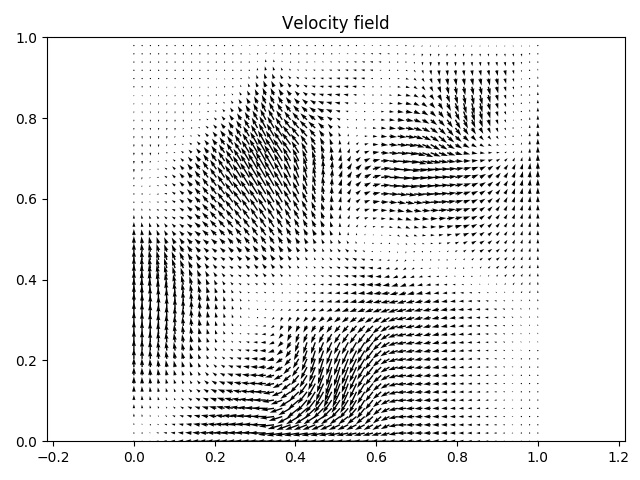CPAB Transformations [1]: finite-dimensional spaces of simple, fast, and highly-expressive diffeomorphisms derived from parametric, continuously-defined, velocity fields in Numpy, Tensorflow and Pytorch.
The main idea behind this library is to offer a simple way to use diffiomorphic transformations and incorporate them into existing software. The diffiomorphic transformations are based on the work of Freifeld et al.. The library supports diffiomorphic transformations in 1D (time series), 2D (images) and 3D (volumetric images).
This code is based on the original implementation CPAB transformations by Oren Freifeld (Github repo: cpabDiffeo).
Nicki Skafte Detlefsen (email: nsde@dtu.dk)
Thanks to Tobias Slott Jensen and Asger Ougaard for suppling the base code for the 1D and 3D cases. Thanks to Pola Schwoebel for suppling one of the demos.
This software is released under the MIT License (included with the software). Note, however, that using this code (and/or the results of running it) to support any form of publication (e.g., a book, a journal paper, a conference papar, a patent application ect.) we request you to cite [1] and [2].
- Generic python packages: numpy, scipy, matplotlib, pickle
- To use the Tensorflow backend, install tensorflow
- To use the Pytorch backend, install pytorch
To use the GPU implementation (tensorflow or pytorch backend), you need a nvidia GPU and CUDA + cuDNN installed. I recommend going through these installation instructions for tensorflow. If you can get tensorflow working on your machine, pytorch should also work.
Clone this reposatory to a directory of your choice
git clone https://github.com/SkafteNicki/libcpab
Add this directory to your PYTHONPATH
export PYTHONPATH=$PYTHONPATH:$YOUR_FOLDER_PATH/libcpab
or use the supplied setup script
python setup.py install
To run the fast c++ or cuda version using the tensorflow backend, you probably
need to compile the source files yourself into a dynamic library. The repo only contains
the dynamic library compiled on my own desktop, so there is a good chance it wont
work on yours. After installing the library navigate to libcpab/libcpab/tensorflow
folder and type make. This requires you to have a newer version of gcc and nvcc installed.
The interface is simple to use and only have a couple of different methods that should get you started with diffiomorphic transformations. You have the choice to choose between a numpy, tensorflow or pytorch backend. Regardless of backend the main class to interact with is imported as
from libcpab import cpab
T = cpab(tess_size, backend, device, zero_boundary, volume_perservation)
The arguments are:
- tess_size: list, with the number of cells in each dimension
- backend: string, computational backend to use. Choose between "numpy" (default), "pytorch" or "tensorflow"
- device: string, either "cpu" (default) or "gpu". For the numpy backend only the "cpu" option is valid
- zero_boundary: bool, determines is the velocity at the boundary is zero
- volume_perservation: bool, determine if the transformation is volume perservating
The class have a number of methods
# Import library
from libcpab import Cpab
# Define a transformation class
T = Cpab(tess_size, backend, device, zero_boundary, volume_perservation)
# Important methods
g = T.uniform_meshgrid(...) # sample uniform grid of points in transformer domain
theta = T.sample_transformation(...) # sample random normal transformation vectors
theta = T.identity(...) # get the identity transformation
dim = T.get_theta_size() # get dimensionality of transformation parametrization
params = T.get_params() # get different transformer parameters
basis = T.get_basis() # get the basis for the transformation
g_t = T.transform_grid(g, theta) # transform a grid of points using theta
data_t1 = T.interpolate(data, g_t) # interpolate some data using the transformed grid
data_t2 = T.transform_data(data, theta) # combination of the two last methods
plot1 = T.visualize_vectorfield(theta) # visualize the vectorfield of a given parametrization
plot2 = visualize_tesselation(...) # visualize the chosen tesselation
Additionally we supply two other main classes, a CpabSequential class that can be used to efficiently
do multiple wraps in a sequential manner and a CpabAlignment class for easy use of the CPAB-transformations
to do data alignment.
We supply 4 demo files::
- demo1.py: simple use of the library to transform data
- demo2.py: demonstration of the
CpabSequentialclass. - demo3.py: demonstration of the
CpabAlignmentclass. - time_demo.ipyht: a jupyter notebook, that goes through a data analysis case using libcpab
For a specific use of the transformations in a greater context, see this paper[3] and this github repo.
[1] @article{freifeld2017transformations,
title={Transformations Based on Continuous Piecewise-Affine Velocity Fields},
author={Freifeld, Oren and Hauberg, Soren and Batmanghelich, Kayhan and Fisher, John W},
journal={IEEE Transactions on Pattern Analysis and Machine Intelligence},
year={2017},
publisher={IEEE}
}
[2] @misc{detlefsen2018,
author = {Detlefsen, Nicki S.},
title = {libcpab},
year = {2018},
publisher = {GitHub},
journal = {GitHub repository},
howpublished = {\url{https://github.com/SkafteNicki/libcpab}},
}
[3] @article{detlefsen2018transformations,
title = {Deep Diffeomorphic Transformer Networks},
author = {Nicki Skafte Detlefsen and Oren Freifeld and S{\o}ren Hauberg},
journal = {Conference on Computer Vision and Pattern Recognition (CVPR)},
year={2018},
publisher={IEEE}
}
- ----------, Version 2.0 - Major overhaul of the library, many changes
- 05/12/2018, Version 1.5 - Fix the broken 3D pipline
- 15/11/2018, Version 1.4 - Various bugfixes
- 30/10/2018, Version 1.3 - Numpy backend support
- 22/10/2018, Version 1.2 - Various bugfixes
- 28/09/2018, Version 1.1 - Pytorch backend support
- 23/08/2018, Version 1.0 - First working version of libcpab


